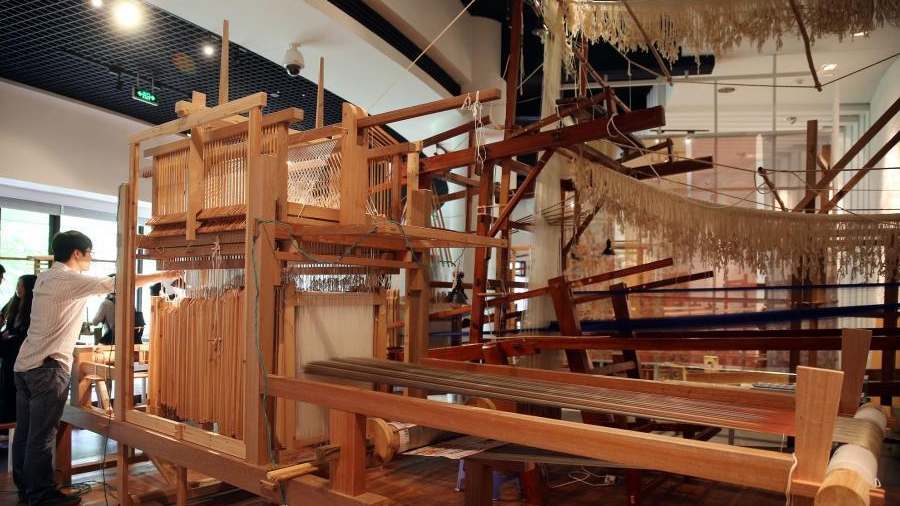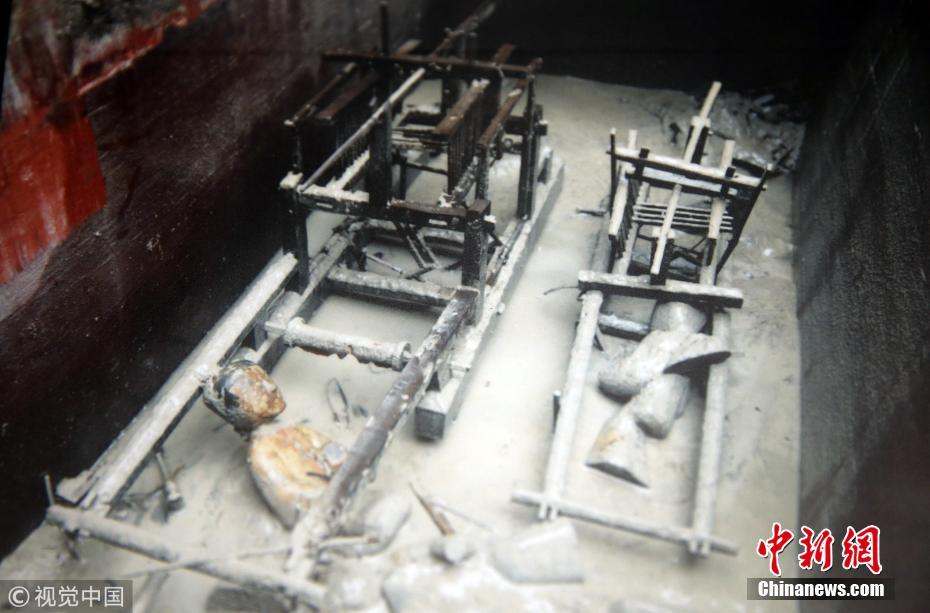
Culture
16:22, 10-Jul-2018
Chinese museums to reconstruct 2,000-year-old loom
Updated
15:27, 13-Jul-2018
CGTN

Chinese museums are reconstructing a loom which dates back 2,000 years to the Han Dynasty (202 BC to 220 AD).
Researchers at Chengdu Museum and Chengdu Shu Brocade and Embroidery Museum will spend three months making a loom for an extremely complicated Shu brocade known for its fine patterns, said Zhou Xun of Chengdu Museum.
"Altogether, the silk has to be threaded over 100,000 times. It is similar to computer programming. When the machine is ready, it can be operated by only one weaver," she said.
The loom is about four meters long, but even an experienced worker could only weave 13 centimeters of brocade in a day.
The reproduction is based on four models from the Han Dynasty found in the Laoguanshan Han Tomb in Chengdu in 2012.

The loom is dating back 2,000 years to the Han Dynasty before restriction. /VCG Photo via Chinanews.com
The loom is dating back 2,000 years to the Han Dynasty before restriction. /VCG Photo via Chinanews.com
The models and tools from the tomb are similar to those shown in the Tiangong Kaiwu, or the Exploitation of the Works of Nature, an encyclopedia on techniques compiled in the Ming Dynasty (1368-1644).
Researchers did not fully understand how the loom functioned until May this year when a working model was made by the China National Silk Museum in Hangzhou.
Shu Jin, or Shu brocade, began to appear in the Spring and Autumn Period (770-476 B.C.) and brocade making techniques reached high levels during the Han Dynasty (202 BC to 220 AD) and the Tang Dynasty (618-907) when the brocade became popular among the high class.
Shu brocade was sold along the Silk Road. Remains of the fine materials were found in Xinjiang and Qinghai in western China.
In 1995, pieces of Shu brocade were discovered in the Niya Ruins on the southern rim of the Taklimakan Desert in Xinjiang Uygur Autonomous Region.
1526km
Source(s): Xinhua News Agency

SITEMAP
Copyright © 2018 CGTN. Beijing ICP prepared NO.16065310-3
Copyright © 2018 CGTN. Beijing ICP prepared NO.16065310-3